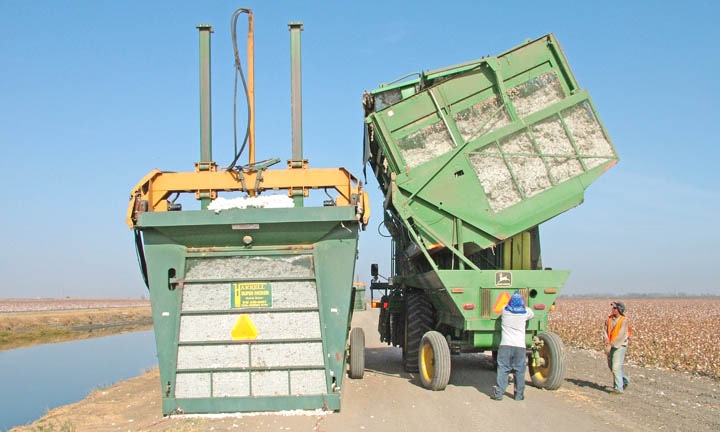
Cotton producers to receive counter-cyclical payments
USDA announced the final counter-cyclical payment rates for cotton and peanuts for 2009.Cotton payments will be made at a time when December International Commodity Exchange cotton futures are at record levels.No counter-cyclical payments will be available for wheat, corn or soybean crops for 2009.

U.S. cotton producers will receive a final counter-cyclical payment of 1.68 cents per pound for their 2009 crop, Agriculture Secretary Tom Vilsack announced today (Oct. 25).
Although the payments will be made nearly a year after the fact, they could be an issue in the 2012 farm bill debate because they were announced on a day when December ICE cotton futures set an all-time record of $1.24 cents per pound.
Under the formula set up in the last two farm bills, USDA keeps a running tally of monthly marketings and prices for the crop year and uses those to calculate a final counter-cyclical payment based on the difference between the average market price for the year and the target price for program crops, such as cotton and peanuts.
Market has moved
The farm bill prohibits the Farm Service Agency, which administers the program for USDA, from making counter-cyclical payments for one year before Oct. 1 of the following year. As a result, cotton producers are likely to see headlines accusing them of receiving farm program payments at the same time they’re receiving record prices for cotton.
In the press release on the payment rates, Vilsack said the counter-cyclical payments are necessary to help producers.
“The counter-cyclical payment is another important tool that USDA provides for farmers who produce various crops, including cotton and peanuts. It is vital that we continue to support the hard work of the farmers who depend on these payments to help produce these crops.”
The Farm Service agency said cotton producers who accepted a partial payment of 1.03 cents per pound in March 2010 will receive 0.65 cents per pound or the difference between the final rate and the partial payment. The 2009 marketing year average price for upland cotton was 62.9 cents per pound.
According to FSA data, counter-cyclical payments for 2008-crop upland cotton exceeded $1.2 billion so the 2009 crop upland cotton payments are less than 2008 crop. There were no 2008 crop peanut counter cyclical payments.
The counter-cyclical payment rate is the amount by which the target price for each commodity, specified by the 2008 farm bill, exceeds its effective price. The effective price equals the direct payment rate plus the higher of either the national average market price received by producers during the marketing year or the national average loan rate for the commodity.
No counter-cyclical payments have been made for corn, wheat or soybeans in recent years because their average market prices have exceeded the target price for those commodities.
A table displaying the target price, average market price, loan rate, direct payment rate, effective price and final counter-cyclical rate for peanuts and upland cotton is available at http://go.usa.gov/aKS.
85 percent of base
For each commodity, the counter-cyclical payment for each crop year equals 85 percent of the farm's base acreage multiplied by the farm's counter-cyclical payment yield multiplied by the counter-cyclical payment rate.
For more information on the direct and counter-cyclical payment programs, visit your local FSA office or the FSA website: www.fsa.usda.gov.
About the Author(s)
You May Also Like





